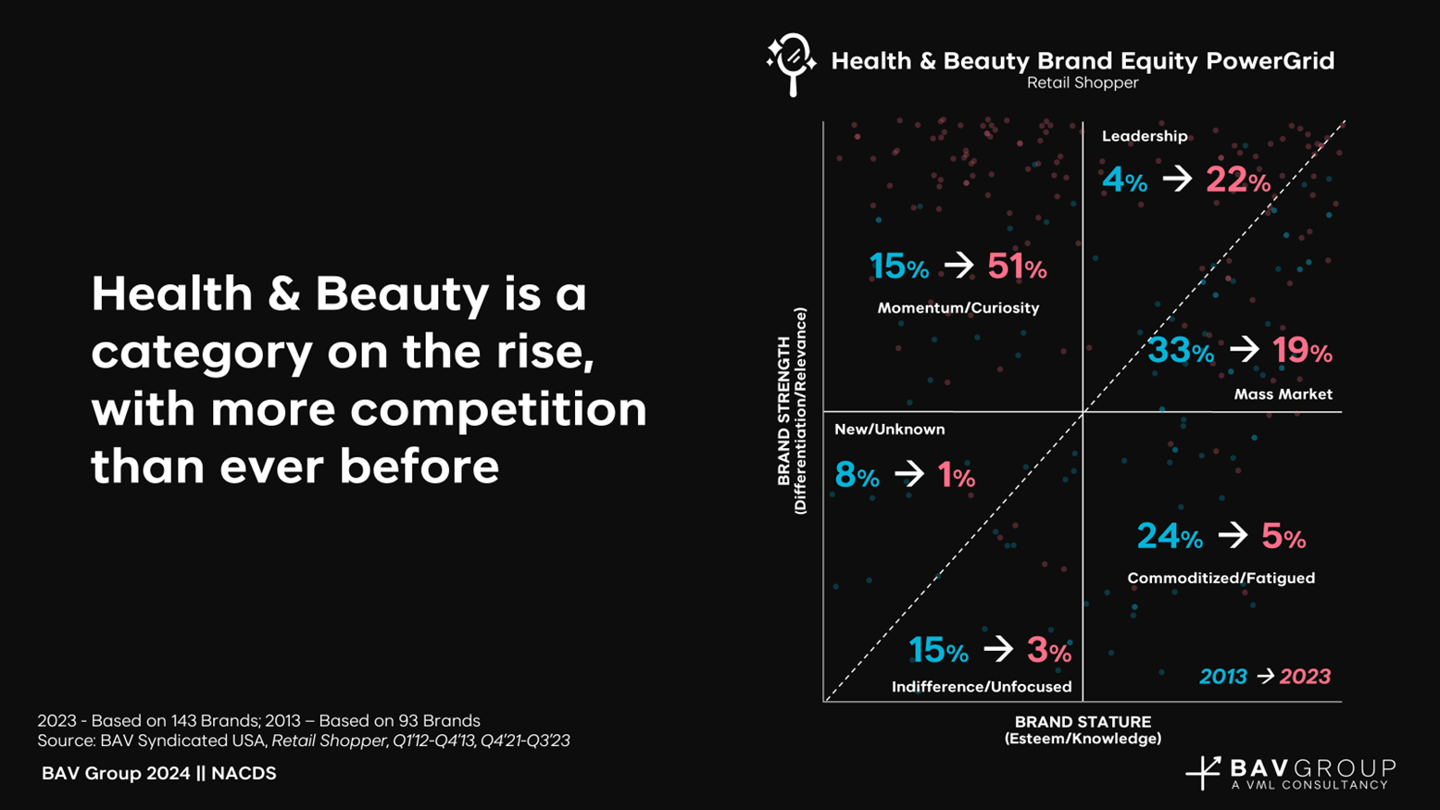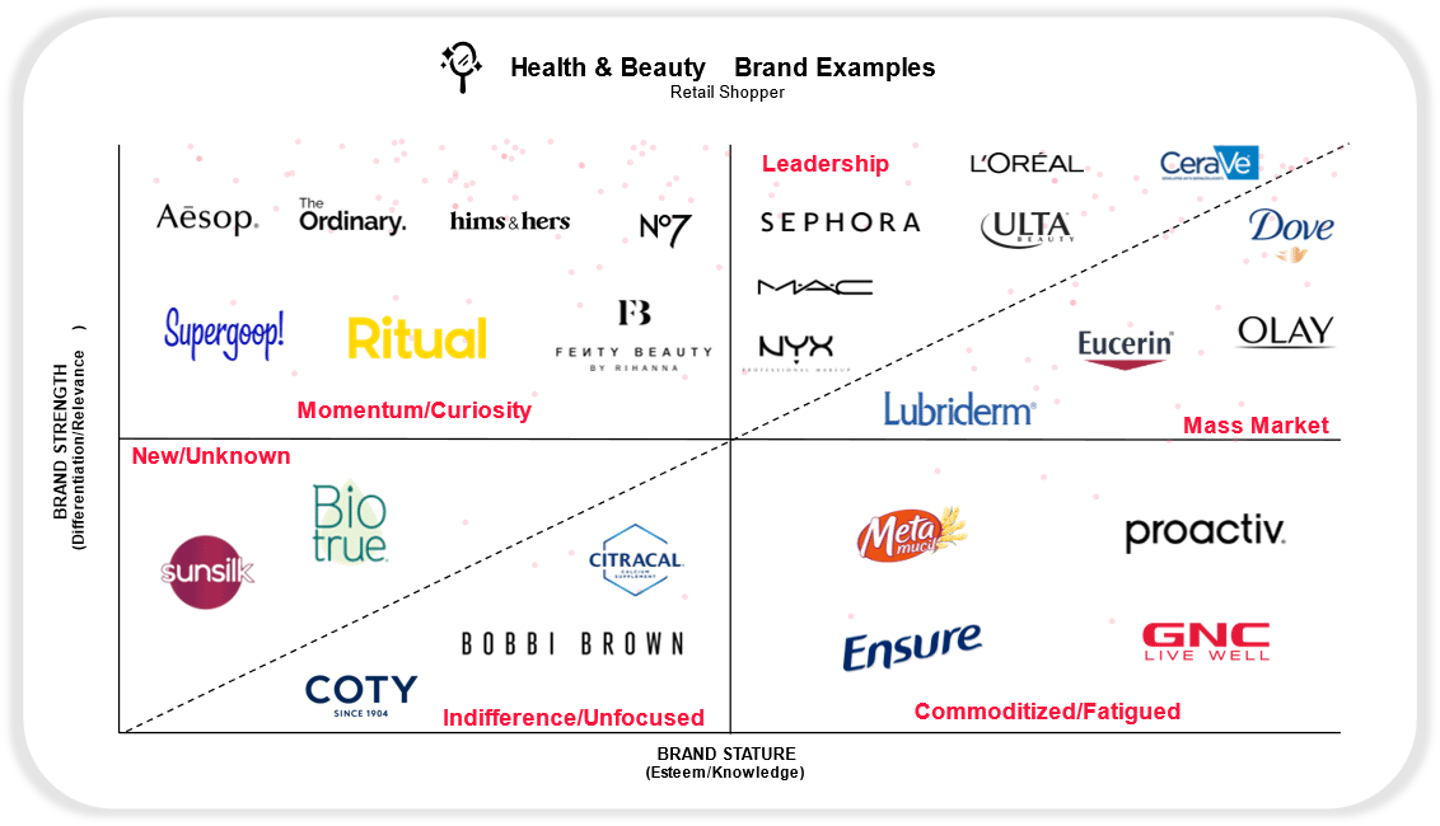Why Purpose Connects to Retail Category Leadership
Having a strong brand purpose and connection with your target consumer is more critical than ever before. Distinct from “social purpose,” a truly purpose-driven brand's mission should be obsessed with satisfying the unmet needs of every category and/or target audience. Purpose brings the target consumer another consideration to utilize a brand.
In this new age of artificial intelligence, brands must create experiences that seamlessly transition between the physical, digital and predictive worlds to reach and convert shoppers faster. Now, every audience interaction serves as an opportunity to reinforce brand identity and improve brand strength. The new pathway to retail category leadership requires any CPG brand to embed its purpose across every consumer, commerce [touchpoint] and customer occasion.
As I transition into my new role as a Managing Director of Strategy and Insights at BAV Group, a WPP and VML consultancy, I have found that the world’s leading companies have successfully made purpose the cornerstone of their brand success, and that’s not an opinion – it’s backed by data. The impact of leading brands prioritizing purpose in every aspect of their marketing and sales investment decisions has created new spaces for more purpose-driven direct-to-consumer brands to approach category leadership in their respective CPG categories. I believe the new pathway to brand leadership requires marketers, sales professionals and retailers to join forces to ensure purpose remains a top priority across every touchpoint along the customer’s path to purchase.
More Purpose Equals Brand Leadership
Purpose-driven brands connect with consumers’ functional and emotional needs more deeply than other brands do. This can be done through investing in charities, creating new social connections, offering new product innovation or forming growth-driven strategic partnerships. The brand purpose informs business decisions and puts the needs of the consumer or shopper first.
A 2023 BAV “Syndicated USA Retail Shopper” study assessed 143 CPG brands across skincare, cosmetics and supplements, and found that 22% of the U.S. health and beauty retail brands now have a brand equity Leadership position, while only 4% had a similar position in 2013 (see Figure 1). The shift in leadership brands over 10 years signals that leader brands (see Figure 2), such as Sephora, Mac and CeraVe, have achieved health and beauty brand leadership through acquisitions of disruptive DTC brands or transforming the mass market parts of the brand’s portfolio with purpose- and growth-driven customer strategies.
L'Oreal's CeraVe is a fitting example of a mass market brand that moved into a leadership position by doubling down on bringing purpose to skincare over the years. CeraVe’s brand leadership has been built by pioneering new spaces like the dermatologist recommended brand showcase on Target.com and doubling down on trade investments across social commerce and pharmacy retailer-focused influencer activations. These investments have given the CeraVe health care professional a purpose in retail activations. This strategy focuses on bringing more solutions to the brand’s target audience and has helped CeraVe build brand strength and connect to new, younger audiences in a more meaningful way.
For example, Crystal Yu, a practicing pharmacist, is leveraged in CeraVe shopper marketing programs on TikTok, YouTube and other platforms to target the retail pharmacist community and influence them to recommend CeraVe to their patients. CeraVe has put practicing pharmacists and dermatologists at the center of their social commerce and shopper marketing influencer strategies. CeraVe’s purpose-driven growth strategy focused on bringing purpose to more commerce spaces, has enabled CeraVe to be one of the fastest growing brands in skincare over the past 10 years.
Commerce Creates New Momentum
The 2023 Syndicated USA Retail Shopper study found that over the past 10 years, more health and beauty brands have gained momentum (51%). Momentum is defined as those brands that are emerging or considered category disruptors. The BAV Group study found that “Momentum brands” source mainly from the commoditized category with just 24% of health and beauty brands now considered commoditized or mass market, which is down from 57% 10 years ago (see Figure 1). The shift supports the idea that more disruptive purpose-driven Momentum brands continue to replace commoditized or store brands which lack clear brand purpose to consumers.
I believe a great illustration of how commoditized brands are being replaced by Momentum brands, is the supplement startup Ritual. Ritual is growing brand strength faster than the commoditized supplement store brands because it delivers on brand promises beyond vitamins. An example of how Ritual delivers beyond product is the brand’s Certificate of Traceability, which is an online tool that gives customers a detailed look into each product from nutrient sourcing to third-party testing, certifications and packaging sustainability. Unlike other retail brand competitors who compete on price-driven promotions alone, Ritual’s brand strength extends beyond the purchase and into community, which provides flexibility in how the brand grows in the future.
Final Takeaway: The New Rules for Brand Success
As the retail landscape continues to shift to an “always on” commerce experience, expect maintaining a strong brand identity to become more challenging. By prioritizing purpose-driven storytelling with human touch and immersive technology, more brands will be able to navigate the complexities of the AI world while building loyalty, trust and an authentic connection with target audiences.
The strategic implication to marketers, sales professionals and their retail stakeholders is to put purpose first and leverage data, expertise and partnership tools to ensure purpose is at the center of all retail category success plans. Brands without purpose will be lucky to be commoditized and mass market brands 10 years from now.
Author: Brian Owens, Managing Director, Strategy & Insights, BAV Group
Key Contributor: Tanay Sharma, Manager, Strategy & Insights, BAV Group
About BAV Group
BAV Group is a WPP and VML (formerly VMLY&R Commerce) consultancy with expertise in consumer insights and data-driven brand and marketing strategies. Its strategic consulting services harness the power of WPP's proprietary BrandAsset Valuator (BAV) — a global database of consumer perceptions of brands. We are strategists and statisticians, but also anthropologists, creatives, sector experts and, ultimately, data storytellers. We bring our diverse experiences and teams together to help our clients make smarter decisions. We provide growth focused brand intelligence, customer insights and marketing and business strategy by bringing data to the brand opinion party.







